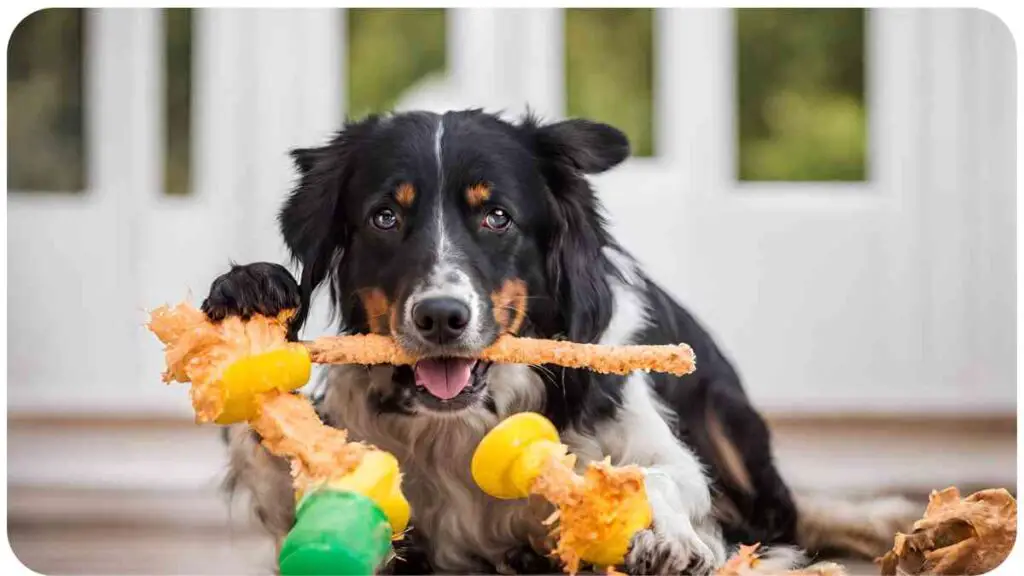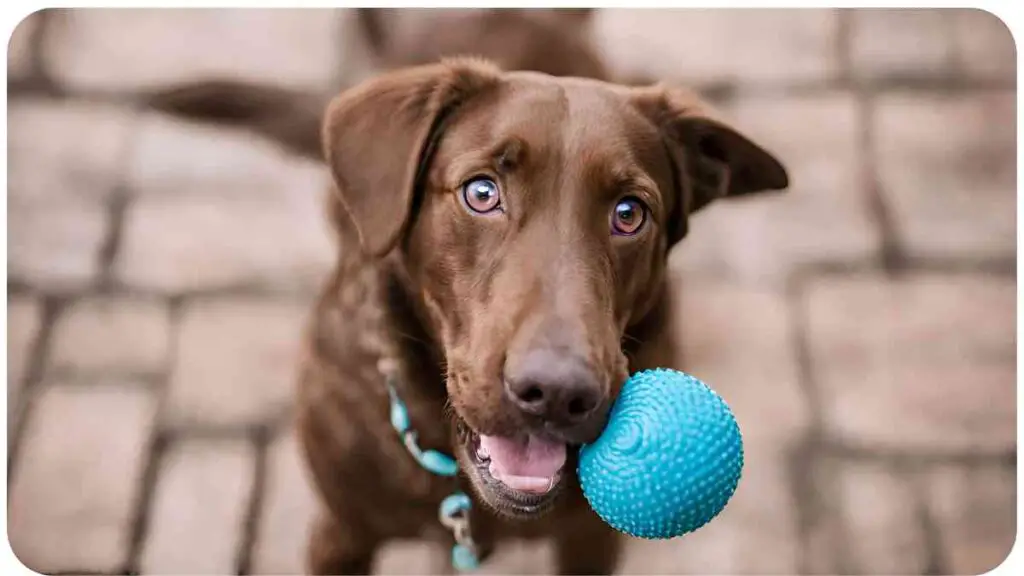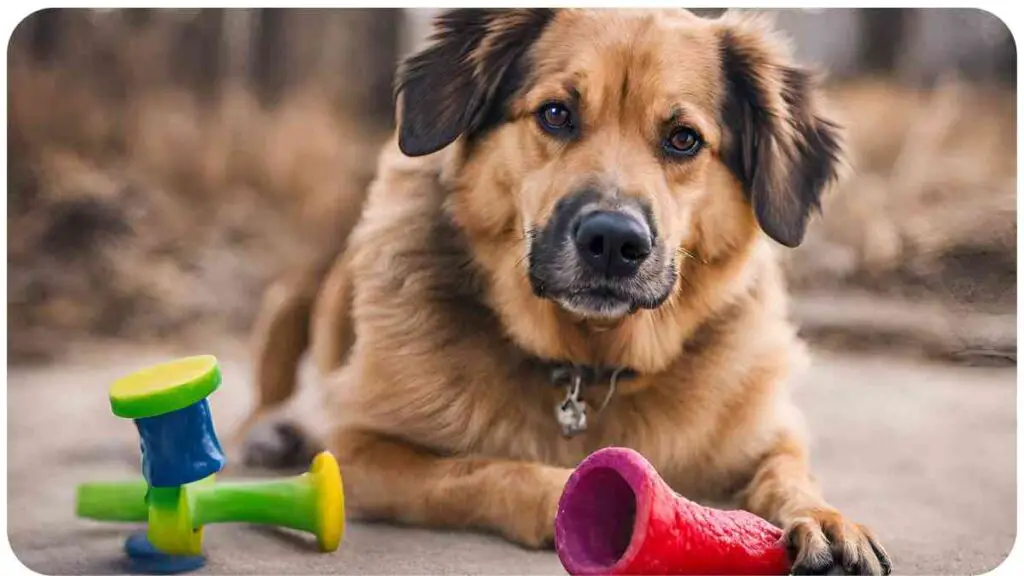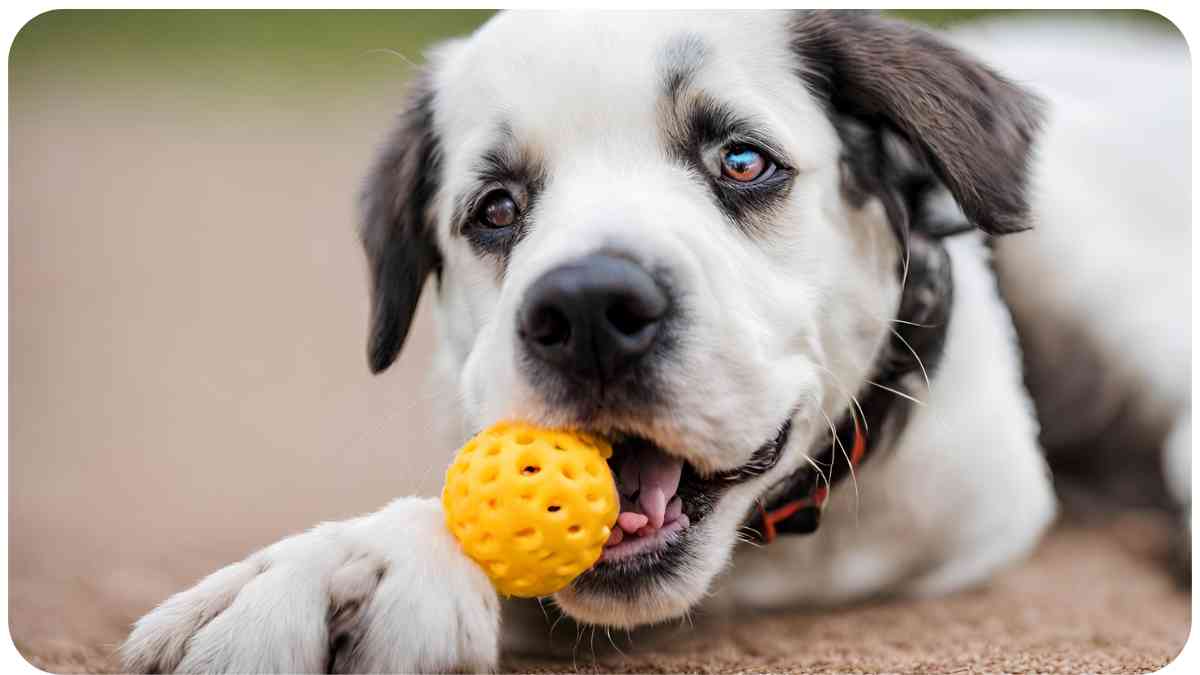Welcoming a furry friend into your home comes with a myriad of joys and responsibilities. One crucial aspect of pet care is providing suitable chew toys that not only entertain but also promote dental health and mental stimulation.
However, with the plethora of options available, understanding which toys are durable and safe for your canine companion can be daunting. In this guide, we delve into the world of chew toy durability, offering insights to help you make informed choices for your beloved pet.
| Key Takeaways |
|---|
| 1. Prioritize durability and safety when selecting chew toys for your dog. |
| 2. Consider factors such as material, size, and texture to meet your dog’s needs. |
| 3. Rotate toys regularly to keep your dog engaged and prevent boredom. |
| 4. Supervise playtime and inspect chew toys for signs of wear or damage. |
| 5. Replace chew toys when necessary to ensure your dog’s well-being and enjoyment. |
2. Importance of Chew Toy Durability

Chew toys serve as more than just playthings for your dog; they fulfill innate chewing instincts and alleviate boredom. Additionally, chewing aids in dental hygiene by reducing plaque and tartar buildup.
Before giving your furry friend any leftovers, ensure they’re safe with our guide on can dogs eat ham. Your dog’s health matters.
However, durability is paramount to ensure the safety of your pet. Fragile toys pose choking hazards and can lead to intestinal blockages if ingested. Therefore, investing in durable chew toys is essential for your dog’s well-being.
3. Factors to Consider
Material
The material of a chew toy significantly impacts its durability. Certain materials, such as rubber and nylon, are renowned for their resilience, while others may fray or break apart quickly.
Size and Shape
Choosing the appropriate size and shape is crucial to prevent choking or discomfort. Opt for toys that are large enough to prevent swallowing but small enough for your dog to grasp comfortably.
Keep your dog healthy and happy by investing in the best air purifier for dogs. Cleaner air means happier pets!
Texture
Texture influences your dog’s interest and chewing experience. Some dogs prefer smooth surfaces, while others enjoy textured toys that provide tactile stimulation.
4. Durability Ratings Explained
To assist consumers in making informed decisions, chew toys often come with durability ratings. These ratings indicate the toy’s ability to withstand chewing and play. Below is a breakdown of common durability ratings:
| Durability Level | Description |
|---|---|
| 1 | Very Weak – Easily destroyed |
| 2 | Weak – Moderate durability |
| 3 | Moderate – Average durability |
| 4 | Strong – Durable under normal use |
| 5 | Very Strong – Highly durable |
Understanding these ratings can help you select toys that align with your dog’s chewing habits and strength.
5. Common Chew Toy Materials

Choosing the right material is crucial for ensuring the durability and safety of your dog’s chew toy. Here’s a closer look at some common materials:
Rubber
Rubber toys are popular for their durability and resilience. They come in various shapes and textures, making them suitable for dogs of all sizes and chewing preferences. Look for toys made from high-quality, non-toxic rubber to ensure your dog’s safety.
Nylon
Nylon chew toys are known for their toughness and longevity. They are resistant to wear and tear, making them ideal for aggressive chewers. Additionally, nylon toys often feature textured surfaces that promote dental health by removing plaque and tartar.
Need to silence those constant alerts? Check out our guide on silent mode on pet monitors for uninterrupted peace.
Plush
While plush toys may be appealing to dogs due to their softness, they are generally less durable than rubber or nylon alternatives. Dogs with gentle chewing habits may enjoy plush toys, but they are not suitable for aggressive chewers or dogs prone to tearing.
Rope
Rope toys are excellent for interactive play and dental hygiene. However, their durability can vary depending on the quality of materials and construction. Always supervise your dog when playing with rope toys to prevent ingestion of fibers.
Table: Comparison of Chew Toy Materials
| Material | Durability | Safety | Suitability |
|---|---|---|---|
| Rubber | High | Excellent | All Dogs |
| Nylon | High | Excellent | Aggressive Chewers |
| Plush | Low | Moderate | Gentle Chewers |
| Rope | Varies | Moderate | Interactive Play |
6. Choosing the Right Chew Toy for Your Dog
Selecting the perfect chew toy for your dog involves considering their size, age, chewing habits, and preferences. Refer to the following table as a guide:
Table: Chew Toy Selection Guide
| Dog Size | Chew Strength | Recommended Toy |
|---|---|---|
| Small (Under 20 lbs) | Gentle | Plush or Rubber |
| Medium (20-50 lbs) | Moderate | Rubber or Nylon |
| Large (50+ lbs) | Strong | Nylon or Rubber |
It’s essential to monitor your dog’s interaction with the toy and replace it if signs of wear or damage are present.
Having trouble with your cat’s microchip door? Find solutions in our article on why isn’t your cat’s microchip door recognizing them. Ensure your cat’s safety today!
7. Tips for Maximizing Chew Toy Durability
To extend the lifespan of your dog’s chew toys and ensure their safety, consider the following tips:
- Rotate Toys: Introduce a variety of toys and rotate them regularly to keep your dog engaged and prevent boredom.
- Supervise Play: Always supervise your dog during playtime, especially with new toys or those prone to destruction.
- Inspect Regularly: Check chew toys for signs of wear, such as frayed edges or loose pieces, and discard damaged toys immediately.
- Size Appropriately: Choose toys that are appropriate for your dog’s size and chewing strength to minimize the risk of choking or ingestion.
- Consider Treat Dispensers: Interactive toys that dispense treats can provide mental stimulation and encourage prolonged play without excessive chewing.
- Wash Toys Regularly: Clean chew toys regularly to remove dirt, bacteria, and saliva buildup, prolonging their lifespan and keeping your dog healthy.
8. Signs Your Dog’s Chew Toy Needs Replacement

Knowing when to replace your dog’s chew toys is essential for their safety. Watch out for the following signs that indicate it’s time for a new toy:
- Visible Wear and Tear: If the toy shows significant signs of damage, such as cracks, tears, or missing pieces, it’s time for a replacement.
- Changes in Texture: As chew toys age, they may become rough or abrasive, posing a risk of injury to your dog’s mouth or gums.
- Decreased Interest: If your dog loses interest in a toy or no longer engages with it actively, it may be time to introduce something new.
- Safety Concerns: If you have any doubts about the safety of a chew toy, err on the side of caution and replace it with a safer alternative.
Manage your pet technology with ease. Learn how to control notifications on your Petkit app for a stress-free experience.
9. Conclusion
Choosing durable and safe chew toys is essential for your dog’s physical and mental well-being. By considering factors such as material, size, and texture, you can select toys that meet your dog’s needs and preferences.
Remember to monitor your dog’s interaction with toys, inspect them regularly for signs of wear, and replace them when necessary. With the right chew toys, you can provide your furry friend with hours of entertainment and promote dental health and overall happiness.
Further Reading
Here are some additional resources to explore:
- Chews Wisely: A Guide to Safe Dog Chews and Non-Toxic Toys: This comprehensive guide provides valuable insights into selecting safe chew toys for your dog, focusing on non-toxic materials and toy safety.
- Another Round of Dog Toy Testing: A Focus on Safety, Durability, and Cost: Learn about the latest findings from dog toy testing, including considerations for safety, durability, and cost-effectiveness.
- What Type of Chew Toys Are Safe for Dogs?: This informative article discusses different types of chew toys and provides guidance on selecting safe options for your canine companion.
FAQs
Are plush toys safe for dogs?
Plush toys can be safe for dogs with gentle chewing habits. However, it’s essential to supervise play and replace plush toys if they show signs of damage or wear.
How do I choose the right size chew toy for my dog?
Select a chew toy that is appropriate for your dog’s size and chewing strength. Avoid toys that are too small and could pose a choking hazard, or too large, making them difficult for your dog to chew comfortably.
Are rope toys suitable for all dogs?
Rope toys can be suitable for interactive play and dental hygiene. However, they may not be suitable for aggressive chewers or dogs prone to ingesting fibers. Always supervise your dog when playing with rope toys.
How often should I replace my dog’s chew toys?
Regularly inspect your dog’s chew toys for signs of wear or damage. Replace them as needed to ensure your dog’s safety and enjoyment.
What should I do if my dog swallows a piece of a chew toy?
If your dog ingests a piece of a chew toy, monitor them closely for any signs of distress or discomfort. Contact your veterinarian immediately if you notice any unusual symptoms or behavior.

I’m Dr. Hellen James, a professional veterinarian with a deep interest in the ways that litter size affects the health of animals. I’ve spent years studying this subject and performing research on reproduction in many different kinds of creatures.


